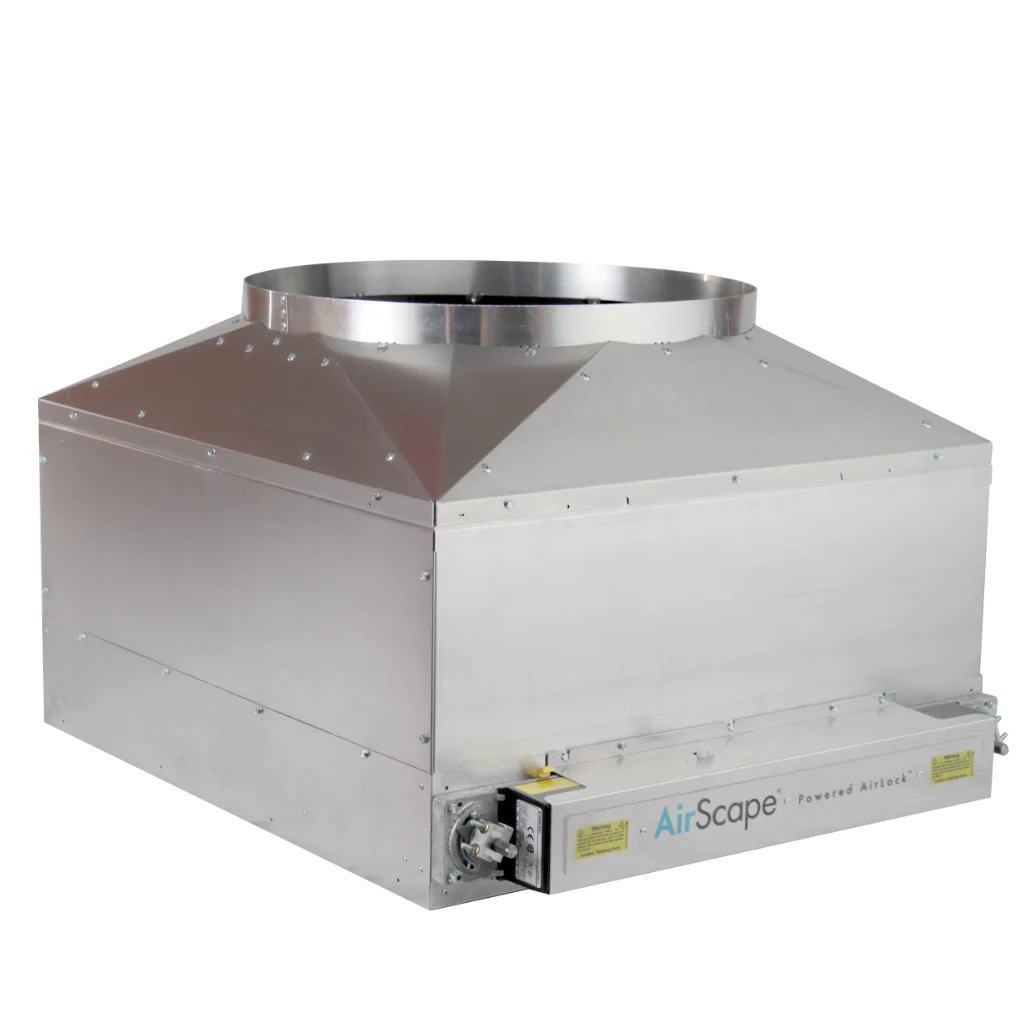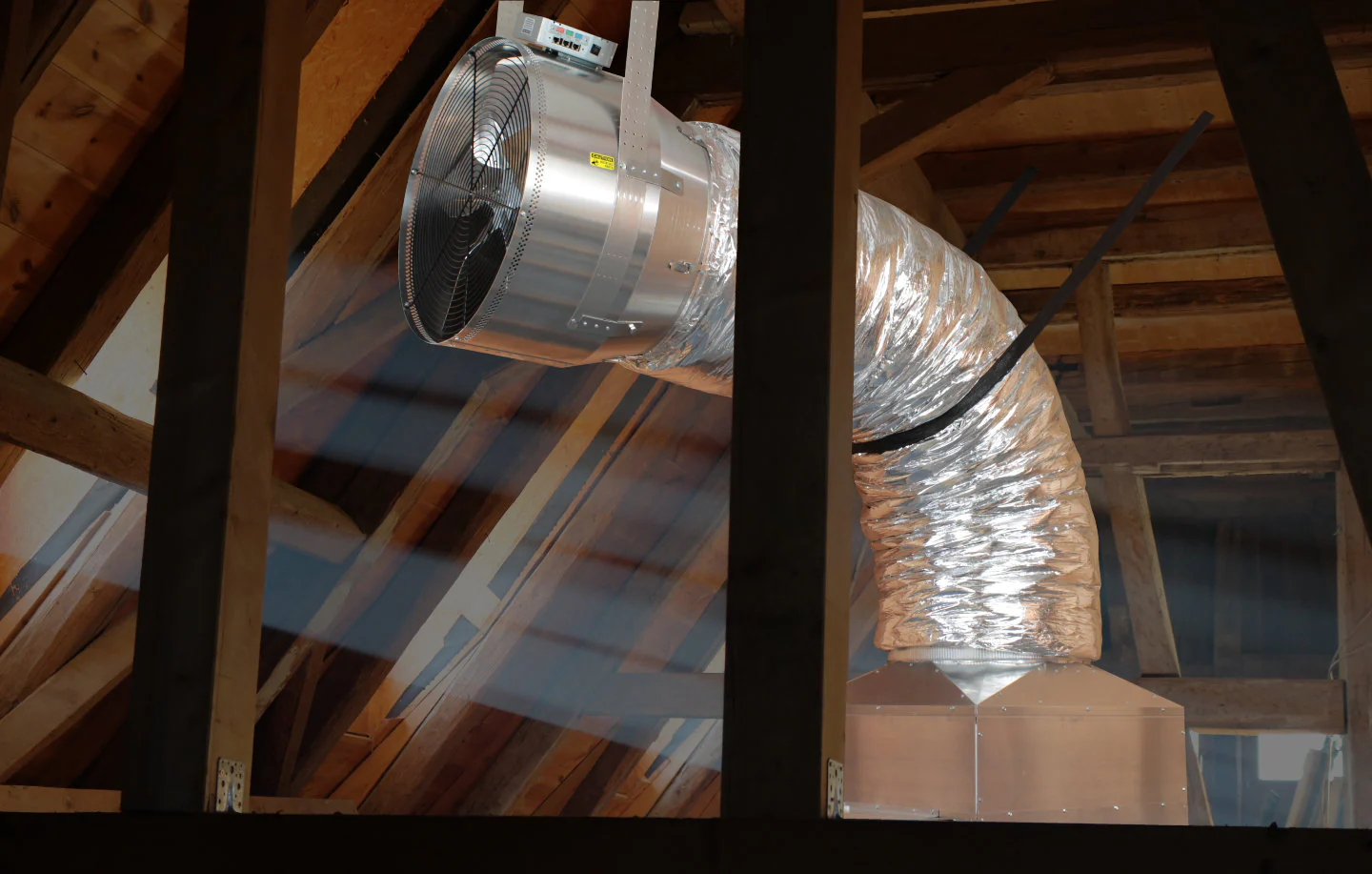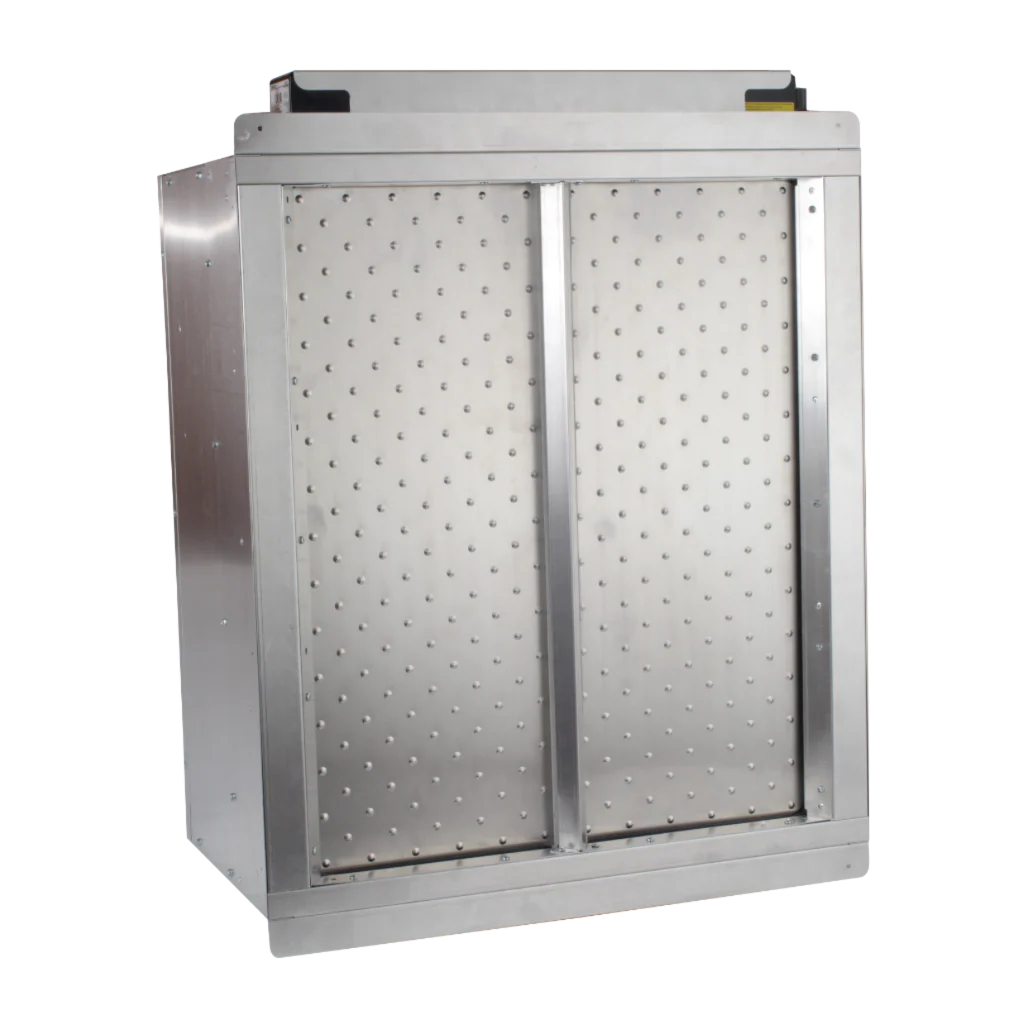As mentioned elsewhere on this blog, my 1987 Shed-style house overheats in the late afternoons of fall and spring. Often, the outside air has begun to cool off before the house even reaches its hottest, as the direct sun through the south and west facing windows blasts the interior all the way to sundown.
Even as the exterior temperature drops in twilight, the house remains hot well into the night, only cooling off after midnight, making for some uncomfortable early evening sleeping hours. It makes it tempting to close up all the windows and run the air conditioning just to deal with trapped, hot interior air.
Sometimes I can’t take the heat and I’ll succumb and run the A/C. At this point, now that I’ve shut the house up and gone to sleep, I end up running the A/C all through the cool night, and only opening the house back up when I awake in the morning. Of course, it takes a ton of energy to cool a hot house, and even though the exterior air sometimes more than 20 degrees F cooler than the inside, which means our heat pump has an easy job at these times, we’re using a ton of energy to do what could be accomplished by a fan, and missing out on sleeping with the windows open on those crisp spring and fall nights.
 Image inspired by this Fine Homebuilding / Green Building Advisor reference
Image inspired by this Fine Homebuilding / Green Building Advisor reference
In fact, there’s a specialized fan for just such a purpose — it’s called a whole house fan. A whole house fan mounts in a bay of the interior ceiling space as a penetration to the unconditioned attic space above, and blows a ton of air into the attic. The idea is that you open a downstairs window and kick on the whole house fan, and in the matter of a handful of minutes, replace all of the air in the house with cool exterior air.

 *The AirScape Sierra is not a mechanical geoduck
*The AirScape Sierra is not a mechanical geoduck
Of course, some gotchas apply. For one, you’re introducing a new hole from the conditioned living space into the the unconditioned attic space, which is a liability during the summer and winter seasons when the attic conditions are dramatically different from those inside. High-end whole house fans have addressed this with heavily insulated (~R50) mechanically-actuated doors that air seal tightly with a robust gasket.
 Damper doors
Damper doors
More problematically, by running this serious fan, you’re now pressurizing your attic space, which necessitates sufficient “free air area” - a measure of how much ventilation the attic has to the outside. The recommendation is kind of a surprisingly high amount - 1 square foot of net free vent area for every 750 CFM of fan capacity.
You want a fan that can do 2-3 air changes per hour of the interior space (rule of thumb), which means in a ~2k sq ft house you’d need a ~5000 CFM fan, which means you’d want about 7 sq ft of net free area in the attic: 5000/750 = 6.67. While soffit vents, ridge vents, and gable vents all contribute to that free air number, their louvers or grilles effectively mean that their contribution to the free air area can only be counted with a factor of ~50%, depending on the type, which means you need quite a bit of ventilation.
If you oversize your fan for the ventilation available, not only will it run louder, use more energy, and do a worse job, you’ll run the risk that you’re pressurizing your attic, which leads (hot, dirty) air to find its way back into the living space via any means available - penetrations, gaps, cracks, tops of walls, etc. Not what you’re after.
The ventilation issue is totally surmountable with appropriately sized gable vents, and there there really is no risk to over-ventilating an unconditioned attic. So as long as you’re willing to add space for your attic to breathe, likely via large gable vents, you should be good sizing the whole house fan to meet your needs.
My real issue is that this overheating, as uncomfortable as it is, and as as wasteful as the energy needed to cool the house is on those nights, is constrained to two relatively short periods during just two seasons of the year. If I were to spend the amount of money that it would take to buy and install a whole house fan and to increase my gable ventilation, I’d probably be better off undertaking some kind of of other improvement that moves the needle during the heating season, which dominates the calendar year.
By my math, with a high-CFM fan that seals and insulates well, you could expect to pay upwards of $2k for the fan. Wiring and installation aren’t too bad - you can DIY if you’re handy - but I’d also need to install some gable vents, which involves very high ladders, which is something I’m through with after a career of sketchy ladder business, so there’s some cost there, and, eventually, you’re getting damn near my friend’s homeowner’s axiom “everything costs five thousand dollars”.